Otomobil endüstrisi her zaman inovasyona öncülük eden bir güç olmuş, daha hafif, daha güçlü ve daha yakıt tasarruflu araçlar üretmek için malzeme bilimi ve üretim yaklaşımlarının yeteneklerini sürekli olarak zorlamıştır. Alüminyum yüksek basınçlı döküm (HPDC), son birkaç on yıl içinde çok önemli hale gelen en önemli teknolojilerden biridir. Bu teknoloji yüksek mukavemetli, karmaşık ve hafif parçaların büyük ölçekli üretimini kolaylaştırmakta ve böylece çağdaş araçların ihtiyaçlarını karşılamaktadır. Elektrikli araçlara (EV'ler) olan ilgi arttıkça ve yakıt verimliliği düzenlemeleri yükseldikçe, alüminyum HPDC güç, hassasiyet ve sürdürülebilirlik tekliflerinin bir kombinasyonu ile yüksek kaliteli otomobil parçaları oluşturmak için hayati bir üretim süreci haline gelmiştir.
Bu makale size otomobil parçalarında kullanılan Alüminyum Yüksek Basınçlı Döküm, süreci, malzemesi, türleri, uygulaması ve GC Hassas Kalıp'ın neden iyi bilinen bir endüstri ortağı olduğu hakkında bilgi verecektir.
Alüminyum Yüksek Basınçlı Döküm Nedir?
Alüminyum yüksek basınçlı kalıp döküm, erimiş alüminyumun yüksek basınçta çelik bir kalıba zorlandığı bir alüminyum kalıp döküm uygulamasını içerir. Basınç o kadar yüksektir ki erimiş metal kalıbın en ayrıntılı katkılarına girer, böylece parçaların en iyi boyutları ve yüzey kalitesi elde edilir. Bununla birlikte, metal akışının daha yavaş olduğu ve metal soğutmanın doğal bir süreç olduğu kum döküm veya kokil dökümün aksine, HPDC daha hızlı üretim döngülerinin ve tutarlı kalitenin kullanılmasına olanak tanır.
Kaliteli bir çelik kalıbın üretilmesiyle başlar ve genellikle kalıbın üzerine bir ayırıcı madde püskürtülür. Alüminyum bir fırında eritilir ve erimiş alüminyum daha sonra 10.000 psi'yi aşan bir basınçla orijinalin içine itilir. Bu metal katılaştıktan sonra kalıp açılır ve parça dışarı atılır. İkinci yöntem özellikle otomotiv kullanımı açısından avantajlıdır, çünkü karmaşık geometrili, ince duvarlı ve yüksek mukavemetli parçalar üretmek için kullanılabilir.
Yüksek basınçlı döküm nedir?
Yüksek Basınçlı Döküm Bu, çok yüksek basınç altında çelik bir kalıba enjekte edilen metal içeren bir metal döküm işlemidir; genellikle çinko, magnezyum veya alüminyum. Bu teknik, geleneksel döküm ve dövme işlemlerinde zor olan ayrıntılı şekil ve detaylara, ince duvar kalınlığına ve pürüzsüz yüzey detaylarına sahip parçaların üretilmesini sağlar.
Prosedür birkaç önemli işlem adımından oluşmaktadır
- Kalıp Hazırlama: Bu, tekrarlanan yüksek basınç ve yüksek sıcaklık döngülerine dayanabilen çelikten yapılmış dayanıklı bir kalıptan hazırlanır. Gelişmiş yazılımlar genellikle kusurlardan kaçınmak için metalin hareketini modeller.
- Eriyen metal: Alüminyum veya diğer metaller yüksek bir sıcaklığa kadar eritilir ve erimiş metal kalıbın içine düzgün bir şekilde serbestçe akar.
- Enjeksiyon: Erimiş metal, 10.000 psi kadar yüksek olabilen bir kuvvet altında kalıp boşluğuna bastırılır.
- Soğutma ve Fırlatma: Metal neredeyse anında soğuyarak kalıbın şeklini alır. Parça daha sonra dışarı itilir ve düzeltme, işleme veya ısıl işlem gibi son işlem seçenekleri verilebilir.
HPDC, parçaların hızlı ve hassas bir şekilde dökülebilmesi ve otomotiv üretim süreci nedeniyle yüksek hacimde tekrarlanabilmesi nedeniyle grave döküm veya kum döküm gibi dökümlere göre öne çıkmaktadır.
Otomobil Parçalarının Alüminyum-Yüksek Basınçlı Döküm İşlemi
Yüksek Basınçlı Basınçlı Döküm (HPDC) aynı zamanda karmaşık alüminyum otomotiv parçaları oluşturmak için yaygın olarak kullanılan yüksek hassasiyetli bir üretim sürecidir. Bu teknoloji hızlı, hassas ve tekrarlanabilir olup motor bileşenleri, şanzıman muhafazaları ve yapısal parçaların yüksek üretimi için çok uygundur. İşte bunun nasıl çalışacağına dair adım adım bir açıklama:
1. Alaşım Seçimi ve Hazırlanması
Bunu, bir bileşenin sahip olması gereken mekanik özelliklere bağlı olarak doğru alüminyum alaşımının seçimi takip eder. Su verme ve temperleme rutin olarak yapılmıyor gibi görünmektedir. Yaygın alaşımlar:
- Al-alaşım: Al-Si-Cu: Mukavemet ve termal performans açısından son derece kararlı olduğu için motor bloklarında ve silindir kapaklarında mükemmeldir.
- Al-Si-Mg alaşımları: Düşük ağırlık, korozyona dayanıklılık nedeniyle yapısal parçalar / muhafazalar.
Seçildiğinde, alüminyum külçeler daha sonra 650-700 °C'de bir ısı fırınında eritilir. Hidrojeni ortadan kaldırmak için gaz giderici maddeler de eklenebilir; bu, dökümde gözenekliliğin varlığını önleyebilir.
2. Kalıp Yapımı ve Son İşlem
HPDC, sıcak sıcaklıklara ve çoklu enjeksiyon basınçlı döngülere dayanmak için yüksek mukavemete sahip çelik kalıplara sahiptir. Kalıp tasarımında dikkat edilmesi gereken başlıca unsurlar şunlardır:
- Boşluk tasarımı: Boşluk birkaç kusurla doldurulabilir.
- Soğutma kanalları: Erimiş metali yüksek bir hızda katı hale soğutun, böylece büzülmeyi kontrol edin ve yüzey kalitesini iyileştirin.
- Fırlatma: Hareketi, parçanın hasar görmeden fırlatılmasını sağlar.
Kalıpların ayrılması genellikle yapışmayı önlemek ve kalıbın temiz bir şekilde çıkarılmasını sağlamak için yüzeylere kaplanan ayırıcı maddelerle gerçekleştirilir.
3. Erimiş alüminyum enjeksiyonu
Bu, HPDC'deki temel prosedürdür. Erimiş alüminyum, parçanın karmaşıklığına bağlı olarak kalıbın içine yaklaşık 10.000 ila 20.000 psi arasında yüksek basınçta zorlanır.
- Basınç o kadar büyüktür ki, ince duvarlı bir kesitte olduğu gibi ince ayrıntılar bile tamamen doldurulur.
- Hava sıkışmasına ve gözenekliliğe katkıda bulunan türbülansa karşı enjeksiyon hızının ve basıncının uygun şekilde kontrol edilmesi sağlanır.
4. Dondurma ve Çözdürme
Enjekte edilir edilmez, alüminyum kalıp içinde hızla soğur:
- Bu, katılaşma hızını artıran kalıp içindeki soğutma kanalları sayesinde mümkündür.
- Hızlı soğutma yoğun bir mikroyapı oluşturarak mukavemeti ve dayanıklılığı artırır.
- Parça hala yakın boyut toleranslarına ve pürüzsüz bir yüzey kalitesine sahiptir.
Soğutma süresi parça kalınlığına, alaşıma ve kalıp tasarımına göre değişir, ancak çoğu durumda yüksek hacimli üretim sağlamak için sadece birkaç saniyedir.
5. Fırlatma
Sertleştikten sonra alet açılır ve parça pimler veya diğer mekanik mekanizmalar yardımıyla dışarı itilir.
- Sorunsuz fırlatma, parçada bozulma veya hasarı önler.
- Daha sonra parçalar, flaş veya yolluk gibi gereksiz malzemeleri kesecek şekilde çıkarılır.
6. İşlem Sonrası
Parçayı mekanik ve estetik olarak sağlam hale getirmek için işlem sonrası yapılır:
- Isıl işlem: Mukavemeti, sertliği ve termal dayanımı artırır.
- Yüzey bitirme: Korozyon direnci ve görünüm için parlatma veya kaplama veya anotlama.
- Teftiş: Boyut, X-ray ve ultrasonik testlerle değerlendirilen gözeneklilik veya büzülme gibi kusurları ele alır.
7. Kalite Kontrol
Otomotiv uygulamalarında kalite konusunda çok fazla eleştiri var:
- Kusurlar: Yaygın kusurlar gözeneklilik, soğuk kapanma ve çatlama olarak görülür.
- Tahribatsız Muayene: X-ışınları veya ultrasonik kullanarak tahribatsız testler yoluyla doğru denetim.
- Süreç ölçümü: Yeni HPDC presleri sıcaklık, basınç ve akışı izlemek için sensörlere ve otomasyona sahiptir ve sonuç olarak hurdayı azaltır ve tutarlılığı artırır.
Sürecin Faydaları
HPDC süreci, otomotiv üretimi alanında birçok avantaja sahiptir:
- Yüksek hassasiyet: Gösterişli formların geometrisinin optimum doğruluğu.
- Hız: Yüksek döngü süreleri, yüksek hacimlerde üretim yapılmasını mümkün kılar.
- Güçlü: Alüminyum, mukavemetini artıran ince taneli bir mikro yapıya sahiptir.
- Tasarım esnekliği: ince duvarları, karmaşık şekilleri ve yerleşik elemanları destekleyebilir.
- Ekolojik verimlilik: Alüminyum yüzde 100 geri dönüştürülebilir ve prosedür çok az atık israfına neden olur.
Alüminyum HPDC otomotiv bileşenlerinin faydaları
1. Yakıt Verimliliği ve Ağırlık Azaltma
Düşük yoğunluk, çeliğin yaklaşık üçte biri olduğu için otomobil üreticilerinin araç üretiminde alüminyum kullanmasının ana nedenlerinden biridir. Araçların hafifletilmesi doğrudan yakıt tüketimini ve egzoz borusu emisyonlarını azaltır ve alüminyum HPDC parçaları ICE ve EV'lerde bariz bir uyum sağlar. Daha hafif olan araçlar, hızı arttırmak ve sürdürmek için kullanılan enerjiyi daha az tüketir ve bu nedenle yakıt ekonomileri daha iyidir ve daha iyi bir karbon ayak izine sahiptirler.
2. Güç ve Dayanıklılık
Hafif olmasına rağmen alüminyum yüksek bir mukavemet/ağırlık oranına sahiptir. Malzemenin mekanik özellikleri, HPDC aracılığıyla metalde küçük ve homojen yapıların oluşturulmasıyla artırılır. Bu, otomotiv gereksinimlerinde sıkça karşılaşılan yüksek gerilimlere, titreşime ve termal döngüye dayanıklı bileşenlere dönüşür.
3. Tasarım Esnekliği
Yüksek basınçlı kalıp döküm, geleneksel işleme veya dövme ile mümkün olmayan karmaşık şekiller ve hassas şekiller oluşturmayı sağlar. Bu tasarım çok yönlülüğü, mühendislerin çeşitli işlevleri tek bir parçada birleştirerek bileşen sayısını, montaj süresini ve olası arıza noktalarını azaltmasını sağlar.
Alüminyum HPDC'de Kullanılan Malzemeler
Alüminyum yüksek basınçlı döküm (HPDC) alüminyum alaşımları güçlü, korozyona dayanıklı ve termal olarak kararlı olacak şekilde optimize edilmiştir. En sık kullanılan alaşımlar şunlardır:
- Al-Si-Cu Alaşımları: Isıya dayanıklı ve çok güçlü oldukları için silindir blokları ve bloklar gibi motor parçalarında yaygın olarak kullanılır.
- Al-Si-Mg Alaşımları: Hafif olması, korozyona dayanıklı olması ve kolayca dökülebilmesi nedeniyle kaideler, muhafazalar ve yapısal bileşenler gibi dekoratif bağlantı parçaları söz konusu olduğunda da iyi bir seçimdir.
Bu alaşımlar, döküm sırasında izin verilebilirliklerine, ince duvarlı yapılar oluşturma kapasitelerine ve katılaşma sırasında rafine bir tane yapısı üretmelerine göre seçilmiş ve uyarlanmıştır. Mukavemeti, aşınma direncini ve boyutsal kararlılığı artırmak için sıklıkla element ve katkı maddeleri eklenir ve bu kalite, malzemeleri yüksek performanslı otomobil parçalarında kullanılmak üzere en iyi hale getirir.
HPDC Alüminyum ile Üretilen Yaygın Otomotiv Parçaları
Alüminyum Yüksek Basınçlı Döküm (HPDC), hafif, sağlam ve geometrik bilgiler sunduğu için otomotiv endüstrisinde son derece yaygındır. Bu proses, endüstrinin gerektirdiği hassasiyet ve yüksek hacimli üretimin yanı sıra bileşenlerden yüksek mekanik yükler, termal döngü ve korozyonun beklendiği durumlarda özellikle yararlı olmuştur. Alüminyum HPDC kullanılarak üretilen ve en sık kullanılan otomotiv ürünlerinden bazıları aşağıdaki gibidir:
1. Motor Bileşenleri
Silindir Kapakları ve Motor Blokları
- Alüminyum HPDC karmaşık bir tasarıma, ince duvarlara ve ince soğutma kanallarına sahip olabilir.
- Hafif alüminyum kullanımı motorun toplam ağırlığını en aza indirecek, bu da yakıt tasarrufunu ve aracın etkinliğini olumlu yönde etkileyecektir.
- Termal iletkenlik. HPDC süreci, motorların daha soğuk ve daha verimli çalışmasını sağlayan ince mikro yapılar oluşturur.
Emme Manifoldları
- HPDC'de hava geçişi görevi gören karmaşık geçişler kolaylıkla gerçekleştirilebilir.
- Alüminyumun mukavemeti dayanıklıdır ve ısı ve korozyon nedeniyle kolayca bozulmaz.
2. İletim Bileşenleri
Dişli Kutusu ve Şanzıman Gövdeleri
- Gövdeler, dayanıklılık ve daha düşük ağırlık kombinasyonu için yüksek mukavemetli alüminyum HPDC'den yapılmıştır.
- İnce duvarlar ve karmaşık geometriler gerçekleştirilebilir ve bunların normal döküm veya işleme kullanılarak oluşturulması zordur.
Diferansiyel Yuvaları
- Alüminyum HPDC, yüksek tork gereksinimlerini karşılayan hafif ve hassas parçalar üretir.
- Prosedür, dişlileri boyutsal olarak kararlı hale getirir; dişlilerin hizalanması ve performansı bu işlem tarafından koşullandırıldığı için çok önemli bir özelliktir.
3. Yapısal Bileşenler
Süspansiyon Braketleri ve Bağlantıları
- Alüminyum HPDC, çeşitli işlevleri tek bir bileşende birleştirme ve böylece montajı basitleştirme fırsatına sahiptir.
- Parçalar, çelik muadillerine kıyasla çok daha düşük ağırlığa sahip üstün yapısal mukavemet ile tasarlanmıştır.
Şasi Bileşenleri
- Alüminyum HPDC'de üretilen dayanıklılık parçaları düşük bir ağırlığa sahiptir, bu da araç kullanımını ve yakıt ekonomisini artırır.
- HPDC, yeni araç platformlarında güvenilir uyum ve montajın mümkün olması sayesinde hassasiyet ve tekrarlanabilirlik sunar.
4. Elektrikli Araç (EV) Bileşenleri
Motor Gövdeleri
- Alüminyumdan yapılmış HPDC muhafazaları, elektrik motorlarında mükemmel termal yönetim sağlar.
- Hafif yapı, elektrikli araçların daha uzun menzile ve daha fazla verimliliğe sahip olmasını sağlar.
Akü Muhafazaları
- HPDC, karmaşık şekillerin aşırı ağırlık eklemeden batarya paketlerini savunmasına izin verecektir.
- Bu süreç, güvenlik açısından kritik parçalarda iyi bir kalite ve yapısal bütünlüğü garanti eder.
5. Diğer Otomobil Parçaları
Frenler / Direksiyon Bileşenleri
- Hafif ve güçlü alüminyum HPDC bileşenleri, araçların tepkiselliğini ve yaysız ağırlığın azaltılmasını sağlar.
Isı Eşanjörleri ve Soğutma Parçaları
- Alüminyum radyatörler, yağ soğutucuları ve ara soğutucular, korozyona dayanıklı özellikleri ve termal iletkenlikleri nedeniyle en iyi HPDC parçalarından yapılır.
Özet
Alüminyum HPDC, otomobil üretiminde çok boyutlu ve temel bir süreçtir. Hafif, güçlü ve karmaşık bileşenler oluşturma gücü, onu uygun hale getirir;
- Motor parçaları üzerinde kesim (montajlar) (silindir kapağı, motor bloğu, emme manifoldları)
- İletim/) Diferansiyel muhafazaları
- Somunlar ve cıvatalar, braket işleri ve şasi parçaları
- EM motor çerçeveleri ve akü kutuları
- Fren, direksiyon ve soğutma parçaları gibi çeşitli kritik kısımlar
Alüminyum HPDC'nin ağırlık azaltma, performans artışı ve tasarımda esneklik sağlaması, onu birincil metal üretim malzemesi haline getirmiş ve hem geleneksel hem de elektrikli araçlarda uygulanabilirliğini korumuştur.
Çeşitli Alüminyum Yüksek Basınçlı Döküm Çeşitleri (HPDC)
HPDC, söz konusu parçaların uzaklığına, karmaşıklığına ve otomobil endüstrisindeki üretim taleplerine bağlı olarak çeşitli şekillerde gerçekleştirilebilir.
1. Sıcak Kamaralı Döküm
Sıcak hazneli kalıp dökümde enjeksiyon mekanizması erimiş alüminyumun içine daldırılır. Bu, braketler ve muhafazalar gibi küçük bileşenlerin hızlı üretimini sağlamak içindir. Yüksek erime noktası nedeniyle alüminyum ile çok fazla gerçekleşmez, bu da aparatı aşırı çalıştırabilir.
2. Soğuk Hücreli Basınçlı Döküm
Soğuk odacıklı kalıp dökümü, motor ve şanzıman gövdelerinin büyük ve karmaşık dökümleri için ideal olan ayrı bir erimiş alüminyum enjeksiyon odasının kullanılmasını içerir. Mukavemeti, hassasiyeti ve dayanıklılığı artırır.
3. Vakum Destekli Kalıp Döküm
Bu teknik aynı zamanda enjeksiyondan önce kalıptan havayı uzaklaştırarak gözenekliliği ve kusurları azaltır. Daha yüksek yapısal stabiliteye ve finişe sahip olması gereken blok motorlar ve silindir kapakları gibi en önemli parçalara uygulanır.
4. Sıvı Döküm (Thixocasting)
Yarı yarıya katı HPDC enjekte eder alüminyum döküm Daha az büzülme ve gözeneklilik ile yarı katı halde. Aşırı kalite ve mukavemetin gerekli olduğu hafif, ince duvarlı veya yapısal otomotiv bileşenlerinde kullanılabilir.
5. Sıkıştırmalı Kalıp Döküm
Sıkıştırmalı kalıp döküm, eriyiği katılaştırırken basınç kullanır ve yoğun yorulmaya dayanıklı bileşenler üretir. Öncelikle güvenlik açısından kritik uygulamalarda, en yaygın olarak süspansiyon bağlantılarında ve motor braketlerinde kullanılır.
Kalite Kontrolü ve Zorluklar
Alüminyum HPDC ile ilgili birçok avantaj olmasına rağmen, çeşitli zorluklar da vardır. Yaygın endişe unsurları şunlardır:
- Gözeneklilik: Gözenekli olabilir, mukavemeti azaltan küçük hava boşluklarına sahip olabilir.
- Büzülme: Düzgün olmayan soğutma nedeniyle hafif bir deformasyon vardır.
- Yüzey Kusurları: Pürüzlülük veya soğuk kapaklar vb. ince işçilik gerektirebilecek kusurlardır.
Bu nedenle üreticiler X-ray, ultrasonik testler ve ince metalürjik testler gibi yoğun kalite kontrolleri kullanmaktadır. Gelişmiş simülasyon yazılımları da üretim süreci başlamadan önce olası kusurların öngörülmesine ve ortadan kaldırılmasına yardımcı olur.
Ekonomik ve Çevresel Temelli Değerlendirmeler
Alüminyum çok kolay geri dönüştürülebilir; bu nedenle çevresel bir çözümdür. Alüminyumun geri dönüştürülmesi, birincil alüminyumun üretilmesi için gereken enerjinin yalnızca yüzde 5'ini tüketerek karbon çıktısını azaltır. Alüminyum HPDC parçaları, ağırlıktaki azalma, yakıt verimliliği ve daha az montaj nedeniyle çelik HPDC bileşenlerine göre ekonomik olarak daha üstün olabilir.
Otomobil Parçalarında Alüminyum HPDC Gelecek Trendi
Otomobil endüstrisi, özellikle elektrikli araçların ardından daha az ağır, verimli otomobillere doğru kayıyor. Bu eğilim, alüminyum HPDC inovasyonunu körüklüyor:
- Geliştirilmiş Alaşımlar: Yeni alüminyum alaşımları daha da güçlü, korozyon ve termal performansa sahiptir.
- Hibrit Malzemeler: Alüminyumun kompozit malzemelerle veya diğer metallerle hibritleştirilmesi, mühendislere belirli bir uygulamaya uyacak şekilde çeşitli özellikleri optimize etme seçeneği sunar.
- Otomasyon ve Endüstri 4.0: Robotik ve diğer akıllı üretim sistemleri verimliliği artırmakta, hataları azaltmakta ve gerçek zamanlı izleme ve raporlama olanağı sağlamaktadır.
Bu gelişmeler alüminyum HPDC'nin gelecekte de otomotiv üretiminde önemli bir rol oynamasını sağlayacaktır.
Neden GC Hassas Kalıp'ı seçmelisiniz?
GC Hassas Kalıp'ın misyonu, otomotiv ve imalat endüstrilerine yüksek kaliteli hassas mühendislik çözümleri sunmaktır. Bu nedenle sektörün liderleri bize güveniyor:
- Yüksek basınçlı Döküm uzmanlığı: Alüminyum alaşımlarının yüksek basınçlı kalıp dökümü ve dayanıklı, karmaşık hafif otomotiv parçaları üretimi konusunda geniş deneyime sahibiz.
- Son Teknoloji: Kalıplarımızı ve dökümlerimizi mükemmellik standardında yapmak için en yeni ekipmanlara ve bilgisayar tasarımlarına sahibiz.
- Kalite Garantisi: Kalite gerçekten garantilidir: her bileşen dikkatle incelenir ve X-ışını ve ultrasonik inceleme ile birlikte boyutsal incelemesi, hatasız ve yüksek performanslı bir parça olmasını sağlar.
- Müşteri Odaklı Strateji: Müşterilerimizle birlikte çalışıyor ve kişiye özel çözümler sunmak ve makul bir maliyetle ve zamanında kaliteli teslimat yapmak için neyin gerekli olduğu konusunda kapsamlı bir araştırma yapıyoruz.
- Sürdürülebilirlik: Geri dönüştürülebilir ve enerji tasarruflu süreçler ve malzemeler sunuyor ve çevreye duyarlı bir şekilde üretim yapıyoruz.
Hassasiyet, güvenilirlik ve yenilik dengesi ile GC Hassas Kalıp, projelerinizi en üst düzeyde profesyonellik ve teknik mükemmellik ile denetleyecektir.
Hizmetlerimiz
GC Hassas Kalıp, otomotiv ve imalat endüstrisinin birçok ihtiyacını karşılamak için tam hizmet yaklaşımı sunmaktadır:
1. Yüksek Basınçlı Döküm Hizmetleri
- HPDC alüminyum motor parçaları, şanzıman kasaları, yapı parçaları ve EV parçaları oluşturmak için.
- Büyük, düşük duvarlı, yüksek mukavemetli parçaların imalatı.
2. Kalıp Tasarımı ve İmalatı
- Doğruluğu, soğutmayı ve dayanıklılığı en üst düzeye çıkarmak için tasarlanmış özel çelik kalıp.
- Hatasız yüksek hassasiyetli kalıplar için üst düzey CAD ve simülasyon.
3. Son İşlem İşleme ve Bitirme
- Estetik ve işlevsel gereksinimleri sağlamak için düzeltme, ısıl işlem, yüzey bitirme ve parlatma.
- X-ışınları, ultrasonik işlem ve boyut kontrolleri gibi Kalite Kontrol kontrolleri.
4. Danışma ve Teknik Destek
- Alaşım seçimi, döküm prosesi ve proses optimizasyonu konularında profesyonel danışmanlık.
- Üretimde hafifletme çözümleri, yapısal verimlilik ve maliyet azaltma çözümleri.
Precision Mold, güvenilir otomotiv inovasyon ortağınızdır.
GC Hassas Kalıp'ta sadece parça üretmekle kalmıyor, aynı zamanda performansı, verimliliği ve güvenilirliği artırmak için çözümler üretiyoruz. Yüksek hassasiyetli kalıplarımız ve bitmiş alüminyum ürünlerimizle, işletmenizin modern otomotiv pazarında en ileri seviyede kalması için ihtiyaç duyduğu derinlemesine bilgiyi sağlıyoruz.
Sonuç
Alüminyum Yüksek Basınçlı Basınçlı Döküm, hafif ve dayanıklı parçalar için temiz, verimli ve sürdürülebilir bir süreç sunarak çağdaş otomotiv endüstrisinin temellerinden biri olduğunu kanıtlamıştır. Hassas kalıp tasarımı, yüksek basınçlı metal enjeksiyonu ve yenilikçi kalite güvencesinin birleşimi HPDC'yi modern bir motorun, şanzımanın, yapısal parçaların ve elektrikli güç aktarma organlarının zorlu gereksinimlerini karşılayabilecek hale getirmektedir. Karmaşık şekiller, ince duvarlı alanlar ve güçlü parçalar yaratma kabiliyeti de hem verimliliği hem de performansı garanti ederek aracın ağırlığını azaltır ve emisyonların azaltılmasına yardımcı olur.
Otomobil üretim endüstrisinin elektrikli otomobilleri ve daha katı yakıt tüketimi standartlarını benimsemesiyle birlikte HPDC alüminyumun kullanım amacı giderek artmaktadır. Yarı katı döküm, vakum destekli enjeksiyon ve alaşımlar hem verimliliği hem de mekanik özellikleri geliştirmektedir. Uçtan uca hizmetler söz konusu olduğunda, GC Precision Mold gibi şirketler, performans ve çevresel gereksinimlere uygun hizmet veya ürünler sağlayabildikleri için mükemmel bir örnek teşkil etmektedir. Esasen, alüminyum HPDC bir üretim sürecinden çok daha fazlasıdır; yeni çağda otomotiv inovasyonu, verimliliği ve sürdürülebilirliği için stratejik bir itici güçtür.
SSS
1. Alüminyum Yüksek Basınçlı Döküm (HPDC) nedir?
Alüminyum HPDC, yüksek hassasiyetli, hafif ve dayanıklı döküm otomotiv parçaları üretmek için erimiş alüminyumun büyük bir basınç altında çelik bir kalıba zorlandığı bir döküm işlemidir.
2. Alüminyum dökümler otomotiv parçalarında neden tercih edilir?
Alüminyum, yüksek mukavemet/ağırlık uygunluğu, güçlü ısı iletkenliği, korozyona dayanıklı özellikleri ve malzemenin geri dönüştürülebilir olması nedeniyle motor, şanzıman ve elektrikli araç parçalarının üretiminde kullanılabilir.
3. Alüminyum HPDC'den hangi parçalar yapılabilir?
Tipik dökümler motor blokları, silindir kafaları, şanzıman kutuları, yapısal braketler, süspansiyon bağlantıları ve Tesla EV pil yuvalarıdır.
4. Alüminyum HPDC'nin faydaları nelerdir?
HPDC karmaşık şekiller ve geometriler, ince duvarlı bileşenler, yüksek hacimli üretim, hassas boyutlar, daha güçlü ürünler ve ağırlık/yakıt verimliliğinde azalma sağlar.
5. HPDC proseslerinin alümin türleri nelerdir?
En yaygın anahtar tipler, her biri farklı parça boyutu ve karmaşıklığına sahip soğuk odacıklı kalıp döküm, sıcak odacıklı kalıp döküm, vakum destekli kalıp döküm, yarı katı (tiksokasting) ve sıkmalı kalıp dökümdür.

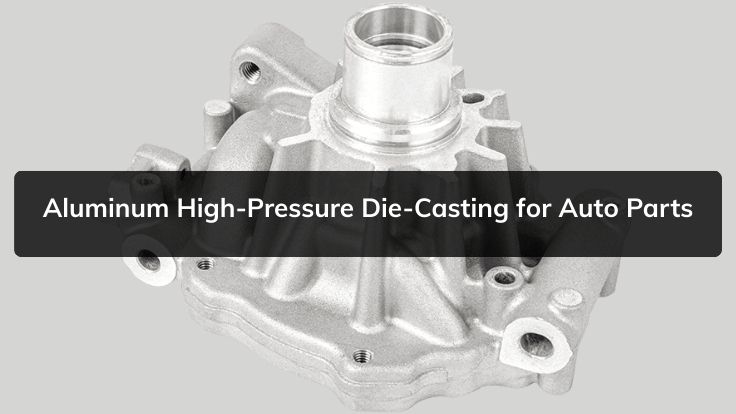

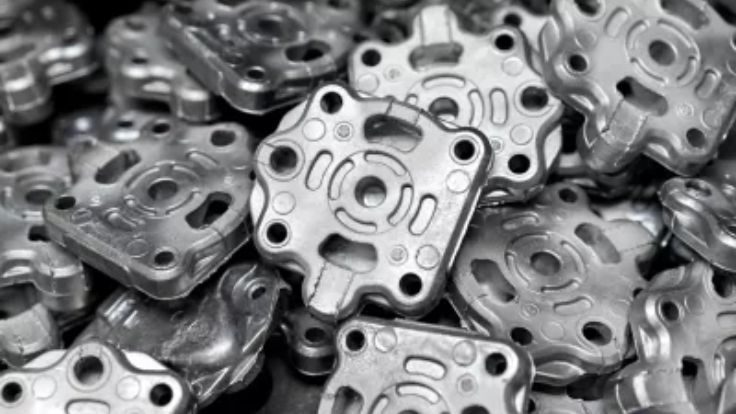


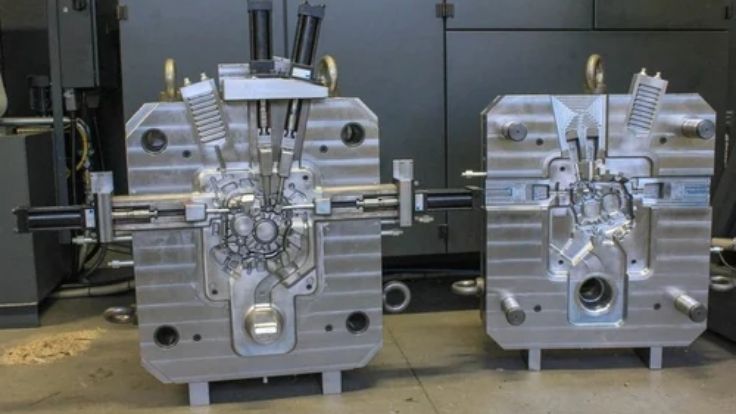

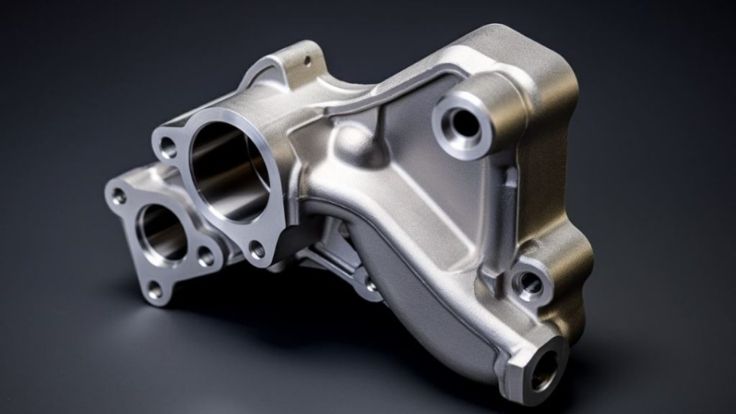
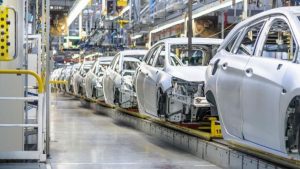
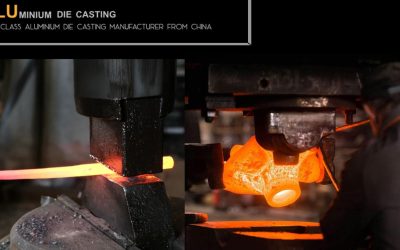
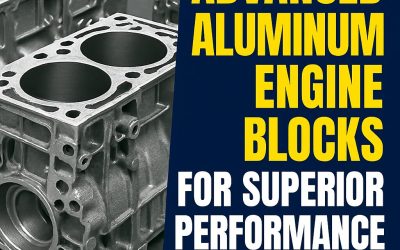

0 Yorum